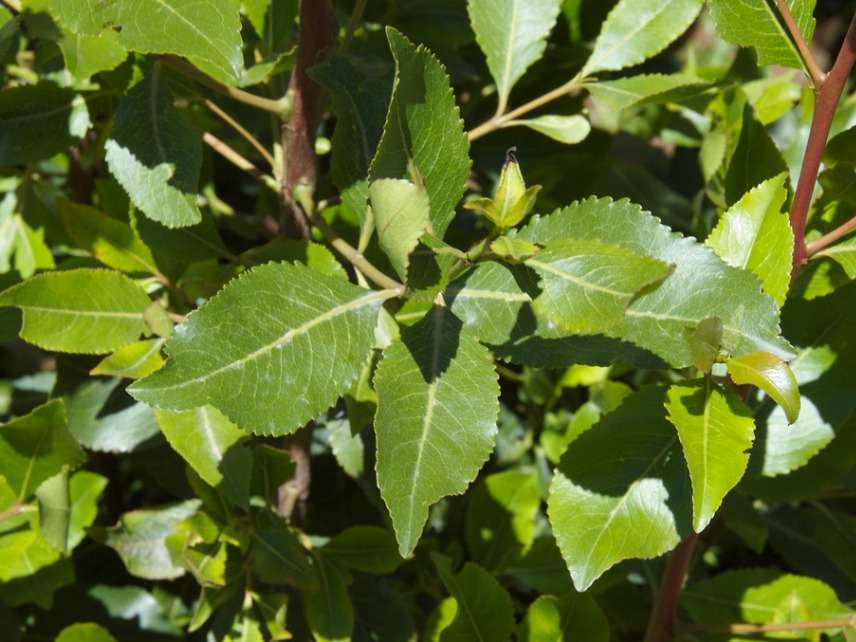Once a Killer Drug, Qat Is Now a Dropout Drug, If You Believe The New York Times
The paper warns that the stimulant shrub, used for millennia in Ethiopia, is creating "a huge problem" among "underemployed youth."

People have been chewing qat, a stimulating shrub that grows in the Horn of Africa and on the Arabian peninsula, for thousands of years. Its effects are commonly compared to those of strong coffee, and it serves similar functions in social and vocational contexts. But unlike coffee, qat seems exotic to Westerners, which is why we periodically see articles like the one The New York Times ran on Saturday, reporting the "alarming" fact that "underemployed youth" in Ethiopia are chewing qat, a development that "authorities" consider "an epidemic in all but name."
Times correspondent Kimiko de Freytas-Tamura quotes Shidigaf Haile, a public prosecutor in Gonder, who says qat chewing by young men is "a huge problem" that is "bad for Ethiopia's economic development because they become lazy, unproductive, and their health will be affected." Yet by Haile's own account (and de Freytas-Tamura's), it's not so much that qat renders young men indolent and unemployable but that "a lack of work" encourages them to while away their time chewing the leaves.
De Freytas-Tamura also casts doubt on the notion that qat makes you lazy by describing a young woman who "has made chewing the drug a ritual, repeated several times a day," and who "even chews on the job, on the khat farm where she picks the delicate, shiny leaves off the shrubs." The habit does not seem to impair her productivity, and a similar story could be told about American office workers who drink coffee several times a day.
Keen to substantiate Haile's claim that qat use is unhealthy, de Freytas-Tamura consults the Drug Enforcement Administration, always a reliable source for information about psychoactive substances banned by the U.S. government, and reports that "chronic abuse…can lead to exhaustion, 'manic behavior with grandiose delusions, violence, suicidal depression or schizophreniform psychosis.'" She gives no indication of how common such outcomes are, leaving the impression that any given qat chewer could be just one leaf away from a mental hospital.
"Khat is legal and remains so mainly because it is a big source of revenue for the government," de Freytas-Tamura avers, as if it is puzzling and requires explanation whenever a government decides to tolerate a psychoactive substance. "But there are mounting concerns about its widespread use." De Freytas-Tamura does consult an Ethiopian psychiatrist who notes that qat chewing "is quite a complex cultural phenomenon" and explains that "simply banning it would be difficult, given its role in cultural rites among certain religious groups." But the reporter's prohibitionist preferences are clear.
This tut-tutting over young men who like to hang out and chew qat is mild compared to what the Times was saying about the plant in the early 1990s, during the U.S. intervention in Somalia. "It is considered generally unwise to move around Mogadishu at night," the Times reported in December 1992, "because by then the narcotic effect of the [teenage nomads'] two-bunch-a-day habit has taken hold. Since the mixture of khat and guns has proved such a lethal combination (the addiction often generates the looting), some desperate Somali elders have facetiously suggested a 'khat for guns' swap to empty the town of weapons."
Qat seems to be a very versatile plant. When a country is in the midst of a civil war, qat drives young men to murder and mayhem. When a country is at peace but unemployment is high, by contrast, qat makes young men do nothing.
Marijuana underwent a similar transformation in the United States. Known for decades as a "killer drug" that inspired appalling crimes, it was later condemned as a "dropout drug" that made its users lethargic and apathetic. But that was all a lot of nonsense, as the Times eventually admitted. Maybe someday it will come around on qat too.


Show Comments (18)